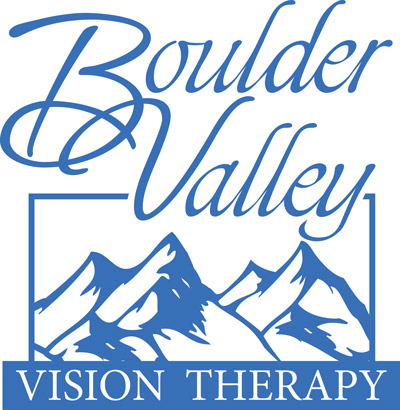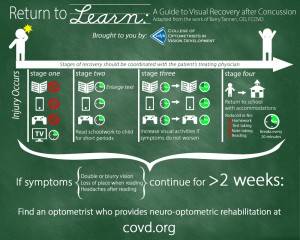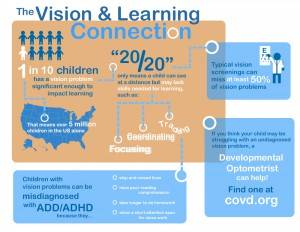Vision Therapy Research Literature
-
A Joint Organizational Policy Statement of The American Academy of Optometry and the American Optometric Association. Vision Therapy: Information for Health Care and Other Allied Professionals. 1999.
-
A Joint Organizational Policy Statement of the American Academy of Optometry and the American Optometric Association. Vision, Learning, and Dyslexia. 1997.
-
American Academy of Pediatrics, American Association for Pediatric Opthalmology and Strabismus, American Academy of Opthalmology. Position statement on learning disabilities, dyslexia, add/adhd and vision. Pediatrics, 90(1):124-125, 1992.
-
American Optometric Association. Definition of optometric vision therapy, St. Louis, MO, June 1991.
-
American Optometric Association. Fact sheets on optometric vision therapy, St. Louis, MO, June 1992.
-
Atzmon, D., Nemet, P., Ishay, A., Karni, E.: A Randomized Prospective Masked and Matched Comparative Study of Orthoptic Treatment Versus Conventional Reading Tutoring Treatment for Reading Disabilities in 62 Children. Binocular Vision and Eye Muscle Surgery Quarterly, 1993, pages 91-106.
-
Birnbaum, M.H., Soden, R., Cohen, A.H.: Efficacy of vision therapy for convergence insufficiency in an adult male population. Journal of the American Optometric Association, 1999, pages 225-232.
-
Boden C, Brodeur D. Visual processing of verbal and nonverbal stimuli in adolescents with reading disabilities. Journal of Learning Disabilities 32 (1): 58-71, 1999.
-
Borsting E., Rouse M.W., et al. Association of Symptoms and Convergence and Accommodative Insufficiency in School-Age Children. Optometry 2003 Jan;74(1):25-34.
-
Borsting E., Rouse M.W., Mitchell G.L., Scheiman M., Cotter S.A., Cooper J., Kulp M.T., London R., and The Convergence Insufficiency Treatment Trial Group. Validity and Reliability of the Revised Convergence Insufficiency Symptom Survey in Children Aged 9 to 18 Years. Optom Vis Sci; 80(12):832-838, 2003.
-
Borsting E, Rouse M, Chu R. Measuring ADHD behaviors in children with symptomatic accommodative dysfunction or convergence insufficiency: a preliminary study. Optometry. 2005 Oct;76(10):588-92.
-
Bowan M. Learning disabilities, dyslexia, and vision: a subject review: A rebuttal, literature review and commentary. Optometry 73 (9): 553-575, 2002.
-
Brodney A.C., Pozil R., Mallinson K., Kehoe P. Vision Therapy in a School Setting. Journal of Behavioral Optometry,12(4):99-103, 2001.
-
Buzzelli, A.R.: Stereopsis, accommodative and vergence facility: do they relate to dyslexia? Optometry and Visual Science, 1991, pages 842-846.
-
Bowan MD. Learning disabilities, dyslexia, and vision: a subject review. Optometry 2002; 73:553-75.
-
Caloroso EE. A sequential strategy for achieving functional binocularity in strabismus. J Amer Optom Assoc, 50(5): 378, 1998.
-
Caloroso EE, Rouse MW, Cotter SA. Clinical management of strabismus. Boston: Butterworth-Heinemann, 1993.
-
Carniglia P., Cooper J. Vergence Adaptation in Esotropia. Opt Vis Sci, 69 (4): 308-313, 1992.
-
19. Ciuffreda KJ, Levi DM, Selenow A. Amblyopia: basic and clinical aspects. Boston: Butterworth-Heinemann, 1991.
-
Ciuffreda, Kenneth J. The Scientific Basis for and Efficacy of Optometric Vision Therapy in Nonstrabismic Accommodative and Vergence Ddisorders. Optometry 2002; 73:735-62.
-
Clinical Pediatric Optometry (LJ Press, B Moore, published by Butterworth-Heinemann, 1993).
-
Coffey B, Wick B, et. al. Treatment options in intermittent exotropia: A critical appraisal. Optom & Vis Sci, 69(5): 386-404, 1992.
-
Cohen AH. Optometric management of binocular dysfunctions secondary to head trauma: case reports. Journal of the American Optometric Association, August; 63(8): 569-575, 1992.
-
Convergence Insufficiency Treatment Trial Study Group. Randomized Clinical Trial of Treatments for Symptomatic Convergence Insufficiency in Children. Archives of Ophthalmology; Vol 126 (No 10): 1336-1349 , Oct 2008.
-
Cooper, J. Ch. 14: Stereopsis. In Procedures in Optometry. Eds. Amos J., Eskridge B. Bartlett Lippencott, 1991.
-
Cooper, J. Clinical Implications of Vergence Adaptation. Opt Vis Sci, 69 (4): 300-307, 1992.
-
Cooper J. Diagnosis and Treatment of Accommodative and Vergence Anomalies Using Computerized Vision Therapy. Practical Optometry. 9:6-10, 1998.
-
Cooper J. Intermittent Exotropia of the Divergence Excess Type – A View Point Journal of Behavioral Optometry, 1997.
-
Cooper, Jeffrey. Summary of Research on the Efficacy of Vision Therapy for Specific Visual Dysfunctions. Adapted from The Journal of Behavioral Optometry 1998; 9(5):115-119.
-
Cooper J., Burns C., Cotter S., Daum K.M., Griffin JR, Scheiman M. Optometric Clinical Guideline: Care of the Patient With Accommodative or Vergence Dysfunction. Am. Optom. Ass. 1998.
-
Cooper J., Ciuffreda K.J., Carniglia P.E., Zinn K.M., Tannen B. Orthoptic Treatment and Eye Movement Recordings in Guillain-Barreí Syndrome. A case report. Neuro-ophthalmology 15(5):249-256, 1995.
-
Cooper J., Feldman J., Eichler R. Relative Strength of Central and Peripheral Fusion as a Function of Stimulus Parameters. Opt. Vis Sci, 69: 1992.
-
Cooper J., Feldman J., Pasner K. Intermittent Exotropia: Stimulus Characteristics Affect Tests for Retinal Correspondence and Suppression. Bin Vis & Eye Mus Qtly. 15(2):131-140, 2000
-
Cooper J., Medow N. Correspondence: Sensory Status in Intermittent Exotropia. Bin Vis Eye Mus Surg Qtly. 9:11-12, 1994.
-
Cooper, J., Medow, N.: Intermittent exotropia basic and divergence excess type. Binocular Vision & Eye Muscle Surgery Quarterly, 1993, pages 185-216.
-
Cooper J., Medow N. Intermittent Exotropia of the Divergence Excess Type: Basic and Divergence Excess Type (Major Review). Bin Vis Eye Mus Surg Qtly 8:187-222, 1993.
-
Cooper J., Pollack G., Ciuffreda K., Kruger, Feldman J. Accommodative and Vergence Findings in Myasthenia Gravis: A Case Report. Journal Neuro-Ophthalmology. 20(1): 5-11, 2000.
-
Cotter S.A. Conventional therapy for amblyopia. In: Problems in Optometry, RP Rutstein (ed), 3(2): 312, 1991.
-
Developmental & Perceptual Assessment of Learning-Disabled ChildrenÜ(S Groffman and HA Solan, published by Optometric Extension Program, 1994.
-
Donmoyer R. Kos. At-risk students: portraits, policies, programs, and practices. Albany, NY: State University of New York Press, 1993.
-
Eden GF, Stein JF, Wood HM, Wood, FB. Differences in eye movement and reading problems in dyslexic and normal children. Vision Research 34 (10): 1345-1358, 1994.
-
Eden G, Stein J, Wood M, Wood F. Verbal and visual problems in reading disability. Journal of Learning Disabilities 28 (5): 272-290. 1995.
-
Farrar, R., Call, M., Maples, W.C., A comparison of the visual symptoms between ADD/ADHD and normal children. Optometry, 2001, pages 441-451.
-
Feldman J.M., Cooper J., Eichler R. Effect of Various Stimulus Parameters on Fusional Horizontal Amplitudes in Normal Humans. Bin Vis Eye Mus Surg Qtly 1993, 8:23-32.
-
Feldman J., Cooper J., Reinstein F., Swiatoca J. Asthenopia Induced by Computer-Generated Fusional Vergence Targets. Opt Vis Sci, 69: 710-716, 1992.
-
Ficarra A.P., Berman J.B., Rosenfield M., Portello J.K. Vision training: predictive factors for success in visual therapy for patients with convergence excess. J Optom Vision Dev 27, 1996, (4): 213-219.
-
Fischer B., Hartnegg K., “Effect of Visual Training on Saccade Control in Dyslexia.” Perception, 2000, 29(5):531-542.
-
Gallaway, M., Scheiman, M.: The efficacy of vision therapy for convergence excess. Journal of the American Optometric Association, 1997, pages 81-85.
-
Garriott RS, Heyman CL, Rouse MW. Role of optometric vision therapy for surgically treated strabismus patients. Optometry and Vision Science, April;74(4): 179-184, 1997.
-
Granet D.B., Gomi C.F., Ventura R., Miller-Scholte A. The Relationship between Convergence Insufficiency and ADHD. Strabismus 2005 Dec;13(4):163-8.
-
Greenstein T. Identification of children with vision problems that interfere with learning. In T. Greenstein, Vision and learning disability. American Optometric Association, St. Louis, 1976, p. 95-114.
-
Grisham, J.D., Bowman, M.C., Owyang, A., Chan, C.L.: Vergence orthoptics: validity and persistence of the training effect. Optometry and Vision Science, 1991, pages 441-451.
-
Grisham D, Sheppard M, Tran W. Visual symptoms and reading performance. Optometry and Vision Science 70 (5): 384-391, 1993.
-
Harris P. Learning-related visual problems in Baltimore City: A Long-Term Program. Journal of Optometric Vision Development 33 (2): 75-115, 2002.
-
Hayes G.J., Cohen B.E., Rouse M.W., De Land P.N. Normative values for the nearpoint of convergence of elementary schoolchildren. Optom Vis Sci, 1998, Jul;75(7):506-12.
-
Jenkins R.H. Characteristics and Diagnosis of Convergence Insufficiency. American Orthoptic Journal, 1999, 49:7-11.
-
Johnson R., Zaba J. Examining the link between vision and literacy. Journal of Behavioral Optometry, 1994; 5(2): 41-43.
-
Johnson RA, Zaba JN. The visual screening of adjudicated adolescents. Journal of Behavioral Optometry 10 (1): 13-17, 1999.
-
Johnson R., Zaba J. Vision screening of at-risk college students. Journal of Behavioral Optometry, 1995; 6(3): 62-65.
-
Keech, R.V. Symposium: Near Vision and Reading Disorders. American Orthoptic Journal, 1999, 49:1-47.
-
Koskela PU, Mikkola T, Laatikainen L. Permanent results of pleoptic treatment. ACTA Ophthalmologica, 69: 39-44, 1991.
-
Krumholtz I., FitzGerald D. Efficacy of treatment modalities in refractive amblyopia. Journal of the American Optometric Association, 1999, June; 70(6): 399-404.
-
Kulp MT, Schmidt PP. Effect of oculomotor and other visual skills on reading performance: a literature review. Optometry and Vision Science, April;73(4): 283-292, 1996.
-
Kushner Burton J. The Treatment of Convergence Insufficiency. Archives of Ophthalmology 2005, 123:100-101.
-
Lazarus SM, The Use of Yoked Base-Up and Base-In Prism for Reducing Eye Strain At the Computer. J Am Optom Assoc, 1996(67) 204-208.
-
Learning about Learning Disabilities, 2nd ed.(edited by B Wong, published by Academic Press in 1998).
-
Lee, R. Active Vision Therapy on an Adult Strabismic Amblyope. Journal of Behavioral Optometry, 1999, 10(5).
-
Leslie S., Optometric Management of Persistent Streff Syndrome with Vertical Yoked Prisms. Behav Aspects Vision Care, 2001 (42) #1 33-42.
-
Luu CD, Green JF, Abel L. Vertical fixation disparity curve and the effects of vergence training in a normal young adult population. Optom Vis Sci, 2000, 77: 663-69.
-
Maples WC. Visual factors that significantly impact academic performance. Optometry 2003; 4:35-49.
-
McKane F, et al. A comparison of auditory/ language therapy with school visual support procedures in a public school setting. Journal of Optometric Vision Development 32 (2): 83-92, 2001.
-
Munoz DP, Armstrong IT, Hampton KA and Moore KD, “Altered Control of Visual Fixation and Saccadic Eye Movements in Attention-Deficit Hyperactivity Disorder.” J Neurophysiol, 2003 (90): 503-514.
-
North RV, Henson DB. The effect of orthoptic treatment upon the vergence adaptation mechanism. Optom Vis Sci, 1992, 69:294-9.
-
Optometric clinical practice guideline: care of the patient with accommodative and vergence dysfunction. St. Louis: American Optometric Association, 1998.
-
Optometric Management of Learning-Related Vision Problems (Scheiman and Rouse, published by Mosby in 1994).
-
Optometric Management of Reading DysfunctionÜ(JR Griffin, GN Christenson, MD Wesson, GB Erickson, published by Butterworth-Heinemann in 1997).
-
Orfield A, Basa F, Yun J. Vision problems of children in poverty in an urban school clinic: Their epidemic numbers, impact on learning, and approaches to remediation. Journal of Optometric Vision Development 32 (3): 114- 141, 2001.
-
Petrunak JL. “The treatment of convergence insufficiency.” American Orthoptic Journal, 1999, 49:12-16.
-
Press, L.J.: The interface between ophthalmology and optometric vision therapy. Binocular Vision and Strabismus Quarterly, 2002, pages 6-11.
-
Press U. Applied concepts in vision therapy. St. Louis: Mosby, 1997.
-
Pritchard C, Ellis GS. “Management of intermittent exotropia: For non-surgical therapy.” Am Orthoptic J, 48: 21-24, 1998.
-
Repka MX, Kraker RT, Beck RW, Cotter SA, Holmes JM, Arnold RW, Astle WF, Sala NA, Tien DR, Pediatric Eye Disease Investigator Group: Monocular oral reading performance after amblyopia treatment in children. Am J Ophthalmol 146: 942-7, 2008
-
Rounds B.B., Manley CW, Norris RH “The effect of oculomotor training on reading efficiency.” J Amer Optom Assoc, 1991 (62): 92-97
-
Rouse M.W., Borsting E, Hyman L, Hussein M, Cotter SA, Flynn M, Scheiman M, Gallaway M, De Land PN, Frequency of Convergence Insufficiency Among Fifth and Sixth Graders. The Convergence Insufficiency and Reading Study (CIRS) group. Optom Vis Sci, 1999 Sep;76(9):643-9.
-
Rouse M.W., Hyman L, Hussein M, Solan H. “Frequency of convergence insufficiency in optometry clinic settings. Convergence Insufficiency and Reading Study (CIRS) Group.” Optom Vis Sci, 1998 Feb;75(2):88-96.
-
Rustein R.P. Alternative treatment for amblyopia. In: Problems in Optometry, RP Rustein (ed), 3(2): 331, 1991.
-
Rustein R.P., Fuhr PS. Efficacy and stability of amblyopia therapy. Optom Vis Sci, 69:747-54, 1992.
-
Scheiman M, Cooper J, Mitchell L, DeLand P, Cotter S, Borsting E, London R, Rouse M. A Survey of Treatment Modalities for Convergence Insufficiency. Optom. Vis. Sci. 79(3):151-157, 2002.
-
Scheiman M, Mitchell L, Cotter S, Cooper J, Kulp M, Rouse M, Borsting E, London R, Wensveen J, Convergence Insufficiency Treatment Trial (CITT) Study Group. A Randomized Clinical Trial of Treatments for Convergence Insufficiency in Children (Archives of Ophthalmology – Jan 2005).
-
Scheiman, M. and others. Vision characteristics of individuals identified as Irlen Filter candidates.Journal of the American Optometric Association, 1990, 61:600-605.
-
Scheiman M, Wick B. Clinical management of binocular vision: heterophoric, accommodative, and eye movement disorders. Philadelphia: Lippincott, 1994.
-
Shorter AD, Hatch SW. Vision therapy for convergence excess. N Engl J Optom, 45(2): 51-53, 1993.
-
Sigler G, Wylie T. The effect of vision therapy on reading rate: A pilot study. Journal of Behavioral Optometry 5 (4): 99-102, 1994.
-
Solan, H.A., In support of Vision Therapy. Review of Ophthalmology, 1998, March: 44-45.
-
Solan H.A. Learning disabilities, Chapter 21. In AA Rosenbloom and MW Morgan, Principles and Practice of Pediatric Optometry. JB Lippincott, Philadelphia, 1990; p. 486.
-
Solan, H.A., Ficarra, A.P. A study of perceptual and verbal skills of disabled readers in grades 4, 5, and 6 Journal of the American Optometric Association, 1990, pages 628-634.
-
Solan, H.A., Ficarra, A.P., Brannan, J.R., Rucker, F. Eye movement efficiency in normal and reading disabled elementary school children: Effects of varying luminance and wavelength. Journal of the American Optometric Association, 1998, pages 455-464.
-
Solan, H.A., Larson, S., Shelley-Tremblay, J., et al. Role of visual attention in cognitive control of oculomotor readiness in students with reading disabilities. Journal of Learning Disabilities, 2001, pages 107-118.
-
Stavis M., Murray M., Jenkins P., Wood R., Brenham B., Jass J. ?Objective improvement from base-in prisms for reading discomfort associated with mini-convergence insufficiency type exophoria in school children. Binocul Vis Strabismus Q, 2002 Summer;17(2):135-42.
-
Sterner B, Abrahamsson M, Sjostrom A. Accommodative facility training with a long term follow up in a sample of school aged children showing accommodative dysfunction. Doc Ophthalmol 99:93-101, 1999.
-
Streff JW, Poynter HL, Jinks B, Wolff B. Changes in achievement scores as a result of a joint optometry and education intervention program. Journal of the American Optometric Association 61 (6): 475-81, 1990.
-
Swanson M. At-risk students in elementary education: effective schools for disadvantaged learners. Springfield, IL; Charles C. Thomas Publishers, 1991.
-
Taylor Kulp M. Relationship between visual motor integration skill and academic performance in kindergarten through third grade. Optometry and Vision Science 76 (3): 159-163, 1999.
-
Taylor Kulp M, Edwards K, Mitchell L. Is visual memory predictive of below-average academic achievement in second through fourth graders? Optometry and Vision Science 79 (7): 431-434, 2002.
-
Taylor Kulp M, Schmidt P. Effect of oculomotor and other visual skills on reading performance: A literature review. Optometry and Vision Science 73 (4): 283-292, 1996.
-
Taylor Kulp M, Schmidt P. The relation of clinical saccadic eye movement testing to reading in kindergartners and first graders. Optometry and Vision Science 74 (1): 37-42, 1997.
-
Taylor Kulp M, Schmidt P. Visual predictors of reading performance in kindergarten and first grade children. Optometry and Vision Science, 73(4): 255-262, 1996.
-
Tong, D. Treatment of Intermittent Esotropia Incorporating Peripheral Awareness Training. Journal of Behavioral Optometry, 10(5), 1999.
-
Vision and ReadingÜ(edited by RP Garzia, published by Mosby in 1996).
-
Weissberg E., Lyons S.A., Richman JE Fixation Dysfunction With Intermittent Saccadic Intrusions Managed by Yoked Prisms: A Case Report. Optometry, 2000, (71) #3 183-188.
-
Wick B, Wingard M, et al. Anisometropic amblyopia: is the patient ever too old to treat? Optom Vis Sci, 1992, 69:866-78.
-
Young B, Collier-Gary K, Schwing S. Visual factors: A primary cause of failure in beginning reading. Journal of Optometric Vision Development, 32 (1): 58-71, 1994.
See our other Resources.




Notes:
Please contact us with any questions you might have at bouldervt@yahoo.com.